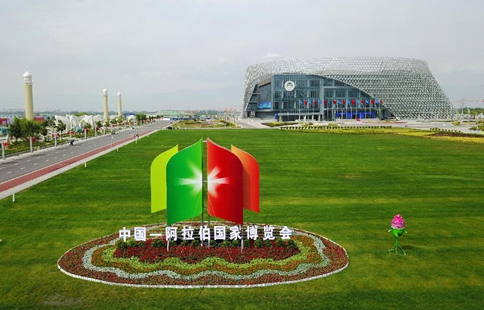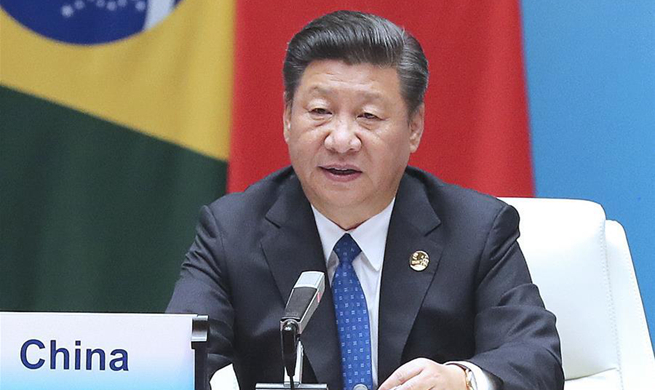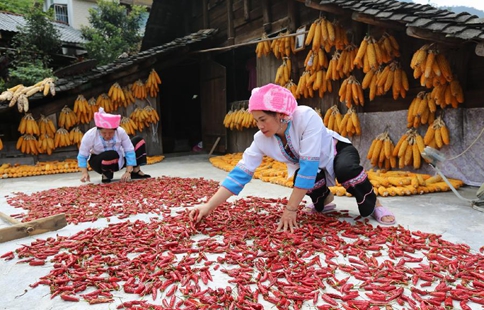by Bedah Mengo
NAIROBI, Sept. 5 (Xinhua) -- When he received his electricity bill last month, Nairobi resident John Musyoka noticed something strange about the figures in the virtual statement.
It showed his bill had risen considerably from 30 U.S. dollars to 40 dollars, yet nothing has changed in the way his family consumed power.
"I have not added a fridge, a microwave or even a TV set, things that you may say add consumption. In fact, during the period, my children who were on school holiday were away with my parents in the rural areas," said Musyoka on Tuesday, adding that he unsuccessfully sought help from the power utility company.
His plight is shared by thousands of consumers in the East African nation who have experienced a surge in their power bills as the country grapples with low production, especially from hydro following poor rains.
While those using prepaid meters are experiencing fast decline in their power bundles, those with post-paid meters are getting higher bills.
Families that paid 35 dollars in July after consuming 200 Kilowatts per hour (KWh) paid 39 dollars in August, latest data from Kenya National Bureau of Statistics (KNBS) indicated Tuesday. Households that consumed 200 KWh in August 2016 paid 20 dollars.
On the other hand, those that consumed 50 KWh paid 6.4 dollars in August up from 5.5 dollars in July. And in the same period in 2016, the consumers paid 5 dollars.
The increase in electricity prices, which have hit a six-year high and contributed immensely to pushing up the country's inflation to 8.04 percent in August from 7.5 percent, is blamed on two things: the volatile shilling and fuel levy.
The shilling is currently exchanging against the dollar at an average of 103, where it has somehow stabilized.
On the other hand, the fuel levy is directly linked to the amount of power generated by diesel generators and injected into the national grid.
The charge in August doubled to 0.02 dollars per unit of electricity consumed, according to the Energy Regulatory Commission, mainly because of increased generation of power from thermal sources.
Kenya produces its electricity largely from three sources namely geothermal, hydro and thermal. Geothermal electricity is generated from wells in the Rift Valley while hydro from stations in Western and Eastern.
Thermal, on the other hand, comes from power plants that use diesel and fuel oil. For many years, the East African nation had relied on hydro power and three years ago it intensified production from geothermal.
However, while geothermal power generation remains high, production from hydro sources has dwindled following persistent drought, pushing Kenya to make up for the shortfall from thermal sources.
According to KNBS, thermal power generation stood at 274 million KWh in June down from 197 million KWh in January.
During the same month, Kenya generated from hydro sources 183 million KWh of electricity as production for the first time in many years fell below 200 million KWh.
On the other hand, production from geothermal peaked at 376 million KWh in June having stabilized throughout the period.
Kenya injected 280 megawatts of geothermal energy to the national grid, pushing up installed capacity from 1,765 megawatts (MW) in June 2013 to 2,327MW as at December 2016. The source contributes about 47 percent of power in the energy mix.
Rise in thermal power production in the East African nation has raised its position in the energy mix to 32 percent from 13 percent, against hydropower's 21 percent from 39 percent. Wind power contributes a paltry 0.4 percent, according to the energy ministry.
While East Africa's biggest economy has not experienced any blackouts or power shortages for close to a year since thermal production increased, consumers are paying for the price.
An increase in power tariffs adds burden to consumers and sets them up for higher inflation as electricity is used to produce many goods.
Last month, according to the KNBS, the housing, water, electricity, gas and other fuels' index increased by 0.54 percent mainly due to marginal increase in the cost of electricity and kerosene.
"The high cost of electricity is mainly burdening the middle-income households if you look at the figures but if the rise continues, then many especially in the rural areas would not afford power.
"This is not good for the country, it is not good for the economy but we have no control over the rains. The only thing we can do is step up geothermal production," said Henry Wandera, an economics lecturer in Nairobi.

















